Stacco
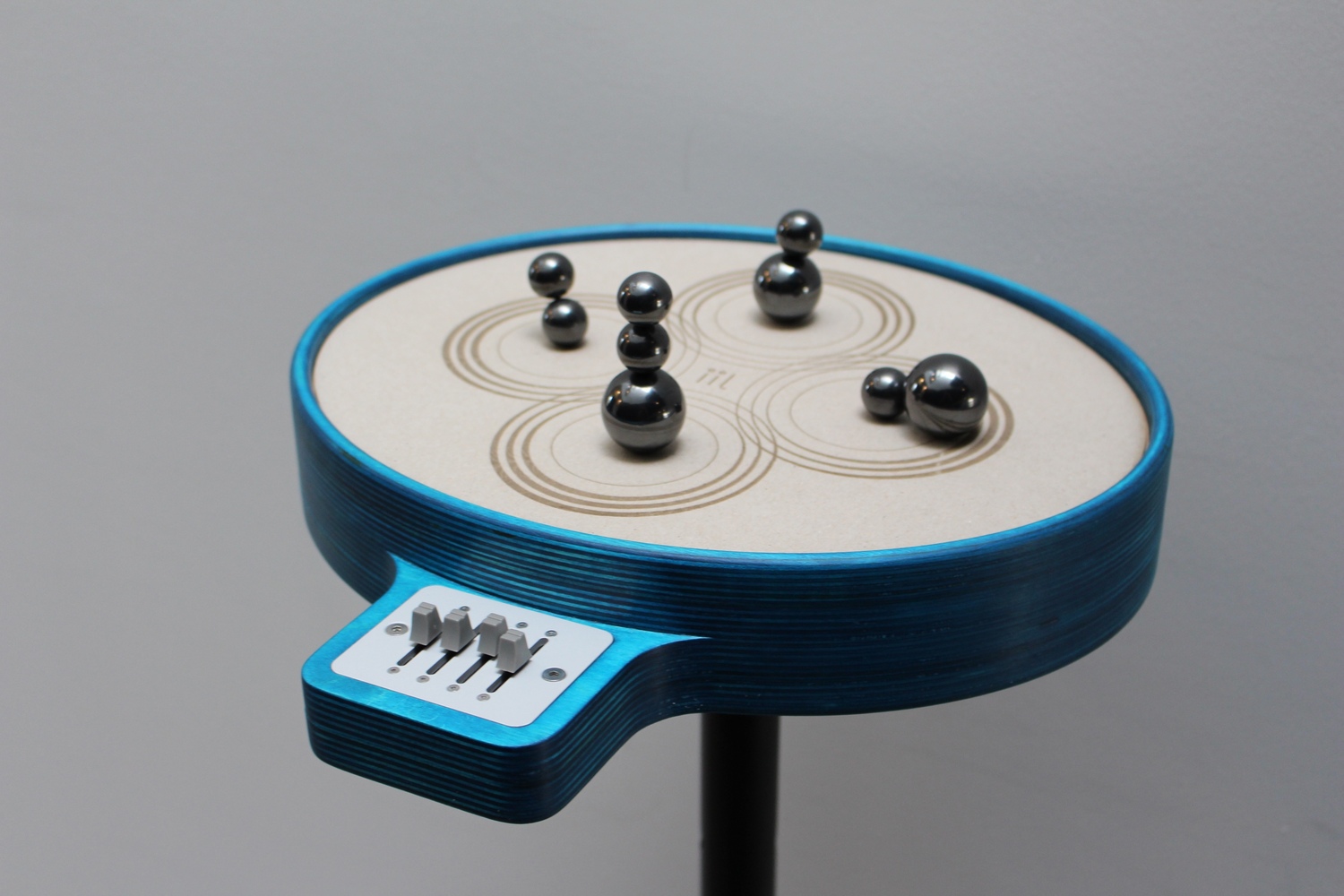
Stacco is an instrument I developed at IIL together with Giacomo Lepri. It attracts and repels magnetic spheres and ferromagnetic objects, allowing both to control fine musical details ant to wonder freely into unexpected ferromegnetic sonic realms.
Under the hood, Stacco features four three-axis magnetometers and as many magnetic attractors, it performs embedded synthesis or can forward its readings to a laptop for more demanding tasks.
We are using Stacco as the ideal controller to play with Neural Synthesis models such as RAVE, as it allows to finely control high-dimensional data through simple gestures.
End of Empire
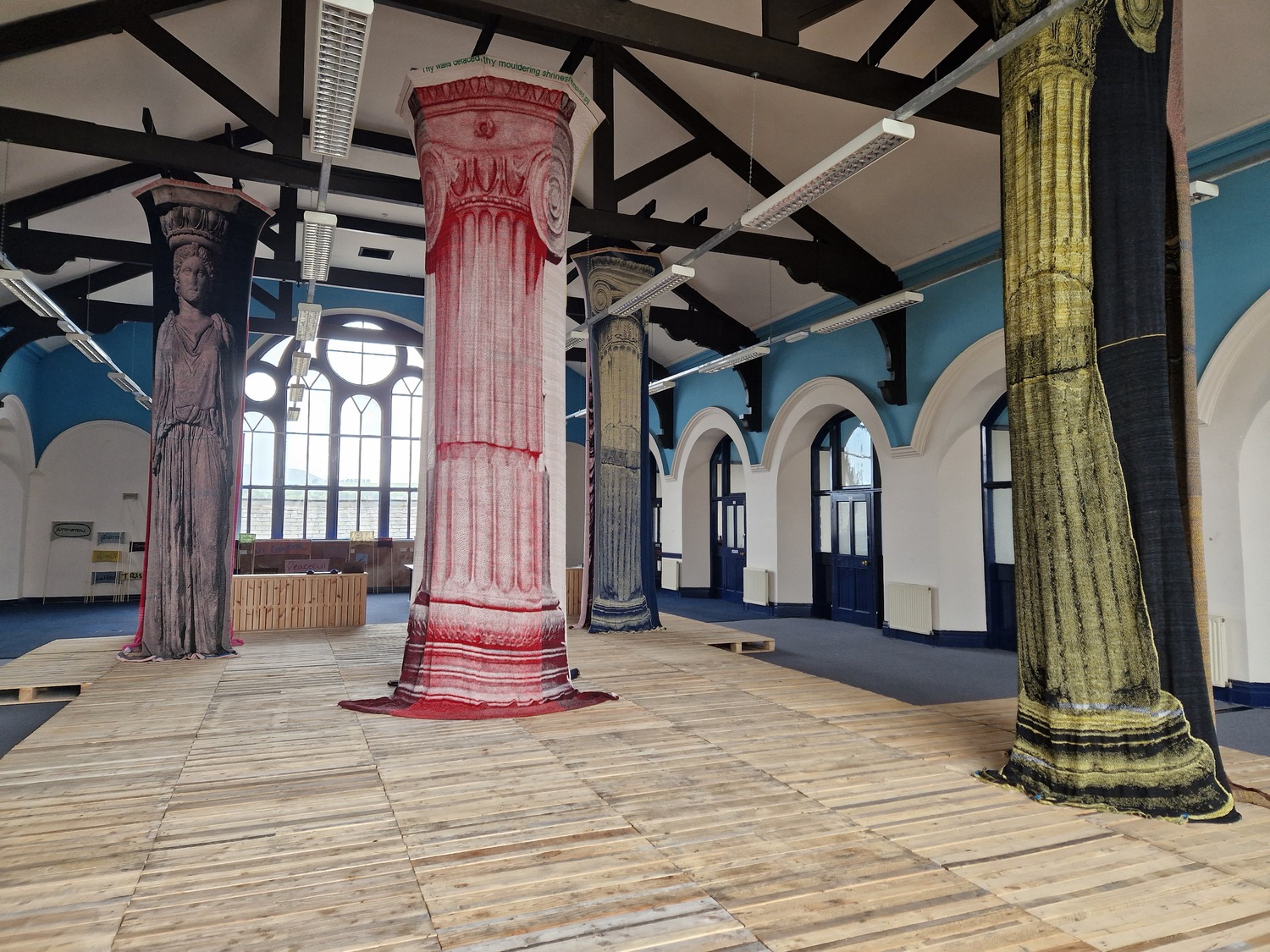
With Eva Sajovic
Interactive Textiles and AI-generated Soundscapes,
British Textile Biennial
Nelson, Manchester (UK)
2023
End of Empire is an interactive textile installation developed in collaboration with Eva Sajovic for the British Textile Biennial. It is a reflection on themes such as imperialism, community and participation, knowledge and technology. It features four interactive textile colums containing a speaker each, plus four sub woofer son the side rooms.
This work invites the viewers to actively participate in the making of the sounds by stepping inside the colums or touching the soft fabrics. In doing this, the sounds are activated.
Magnetic Scores
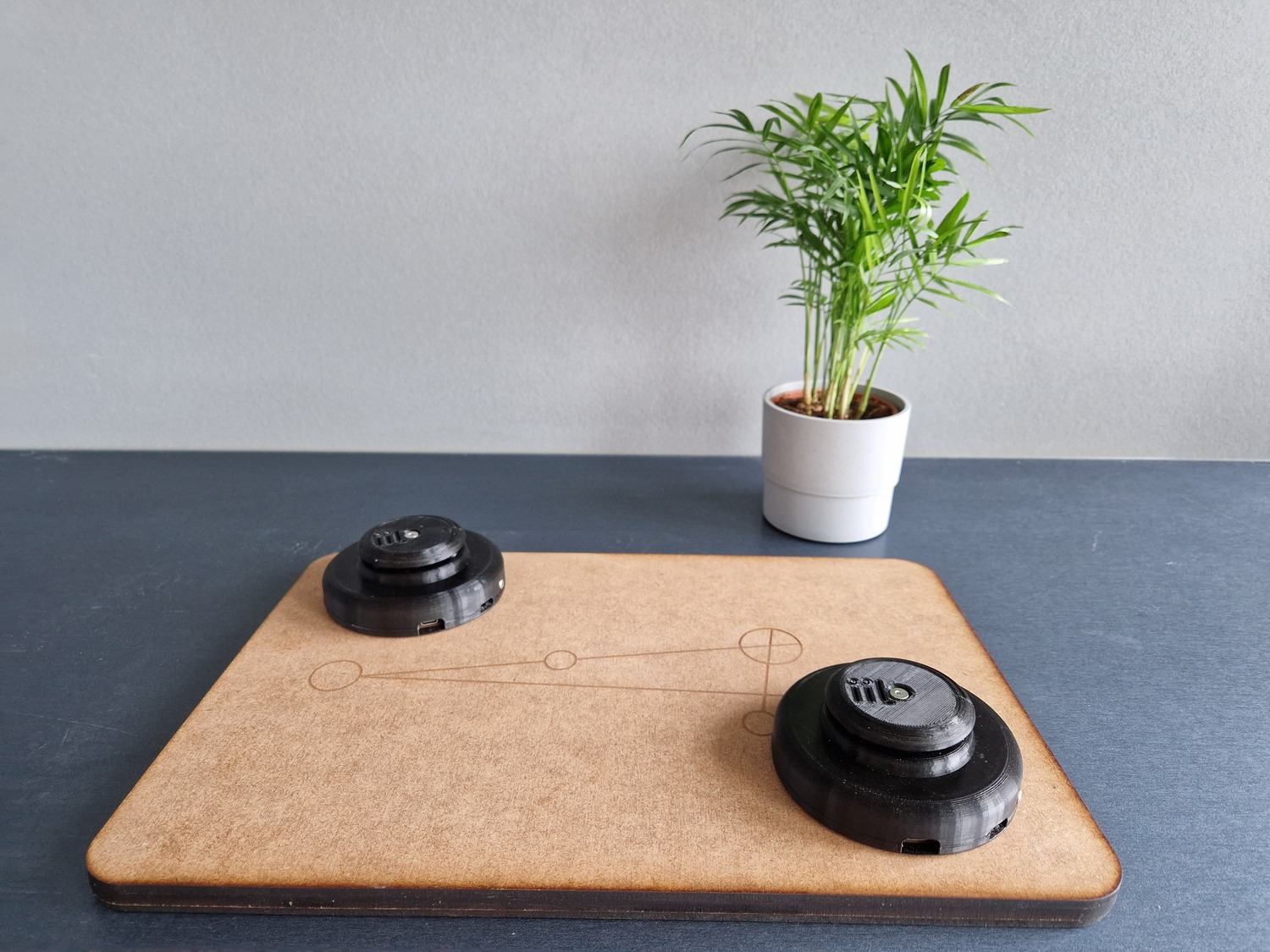
TENOR 2023,
New England Conservatory,
Boston (USA)
Magnetic Scores are a novel type of musical scores I developed at the Intelligent Instruments Lab. They combine visual inscriptions with magnetic ones, and can be both read and haptically experienced by the performer through their interaction with other magnets.
Thales

Presented at NIME Conference,
Mexico City (MEX)
2022-2023
Thales is a composed instrument developed at the Intelligent Instruments Lab, and based on two controllers that interact with each other through permanent magnets. When the performer attempts to join the controllers, these repel each other allowing him to play with the tangible manifestation of their oppðosing magnetic fields, similarly to a drum skin. Each controller contains a riser, held in position by the player's palm. When a magnetic field is encountered the riser activates and pushes on the performer's hand.
Thales uses RAVE, a Neural Synthesis model for real time interaction. The model itsel is trained on the sounds of magnets, hence the "composed" nature of this instrument.
Sonic Baton
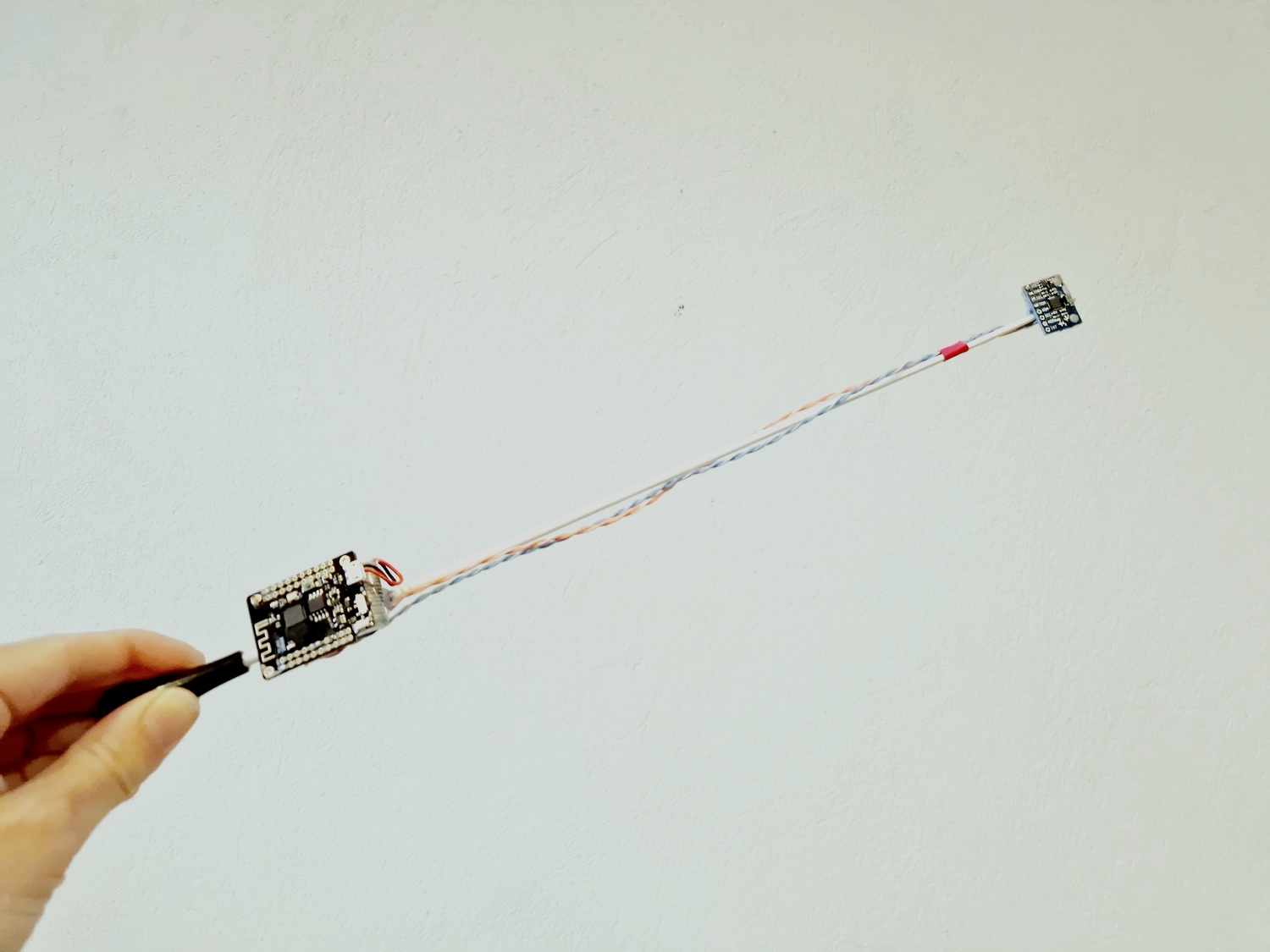
Presented at Limbó Finissage,
Reykjavik (IS)
2023
The Sonic Baton is a prototype developed at the Intelligent Instruments Lab from an idea by the conductor Majella CLarke, with the aim of exploring how the conductor's practice might be extended thorugh an augmented baton.
The instrument consists of a microcontroller, a giroscope and accelerometer wirelesslly forwarding data to the computer. The computer runs a series of Neural Synthesis models based on RAVE and trained at IIL.
We developed three batons, each controlling a different model. We then performed with them at Limbó Finissage and invited people from the audience to play with them in order to understand how the would interact with AI though this particular interface.
The results from these observations led to a research on the spatial projection of AI into the physical space.
Knitworks/Plantascapes
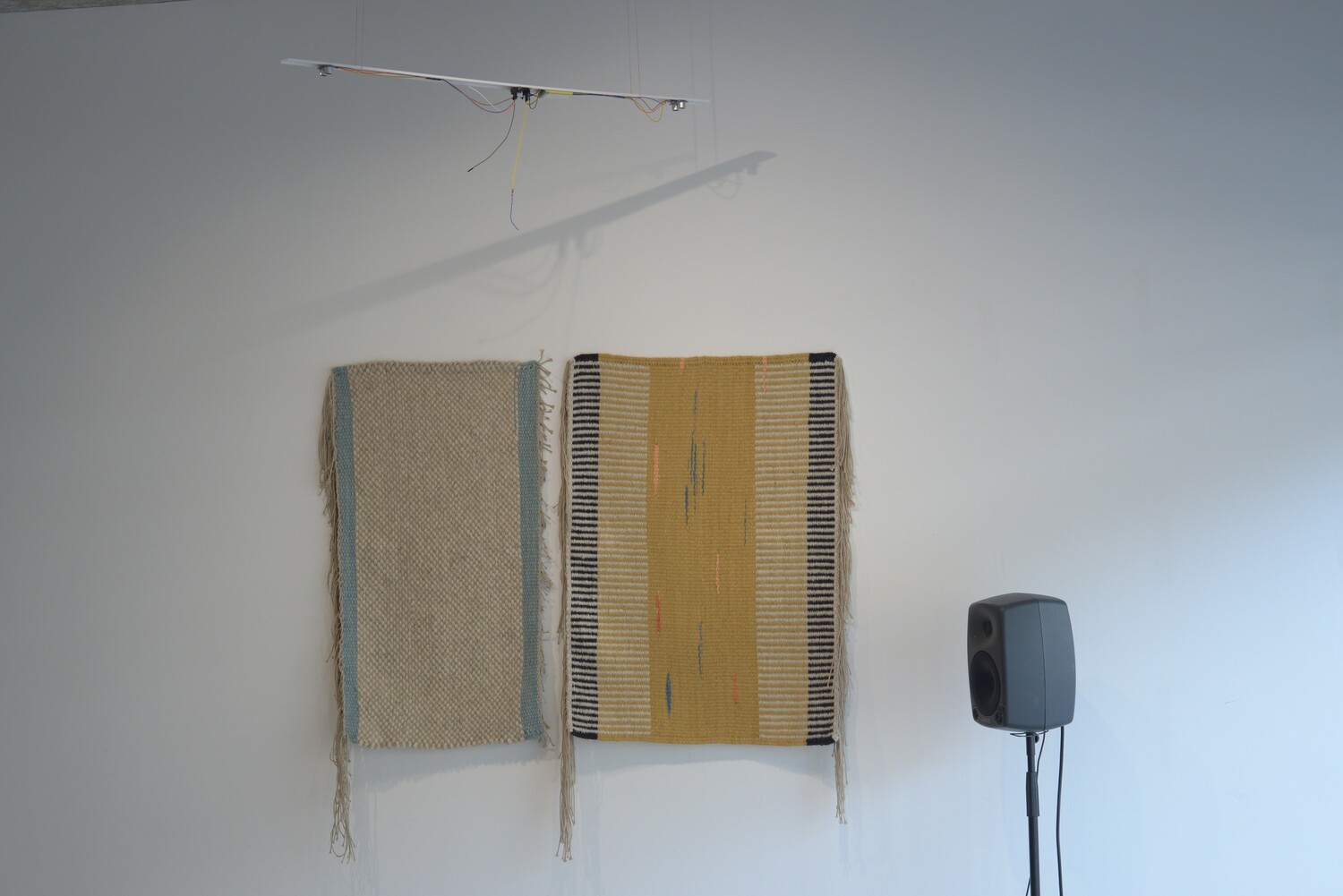
Collaboration with Eva Sajovic
Augmented textiles and generative soundscape,
London (UK)
2022
Interactive sound installation that augments textiles with touch and movement sensors triggered by the interaction with the viewers.
Emo
Emo
Processing video...
AI Score for any ensemble
Music Therapy Workshop for Oncologic Patients,
Altre Parole Foundation, Padova (IT)
2022
Emo is a graphic score controlled by an A.I. algorithm for emotion recognition. It was developed for a workshop with oncologic patients organised by "Altre Parole Foundation".
The system analyses text provided by the participants, and evaluates in real time the presence and weight of each of the five basic emotions. It then represents their values as the amplitude of five colored sinusoids.
The participants used the score to represent and play their emotional states within a common narrative.
W.E.I.R.D. Suite
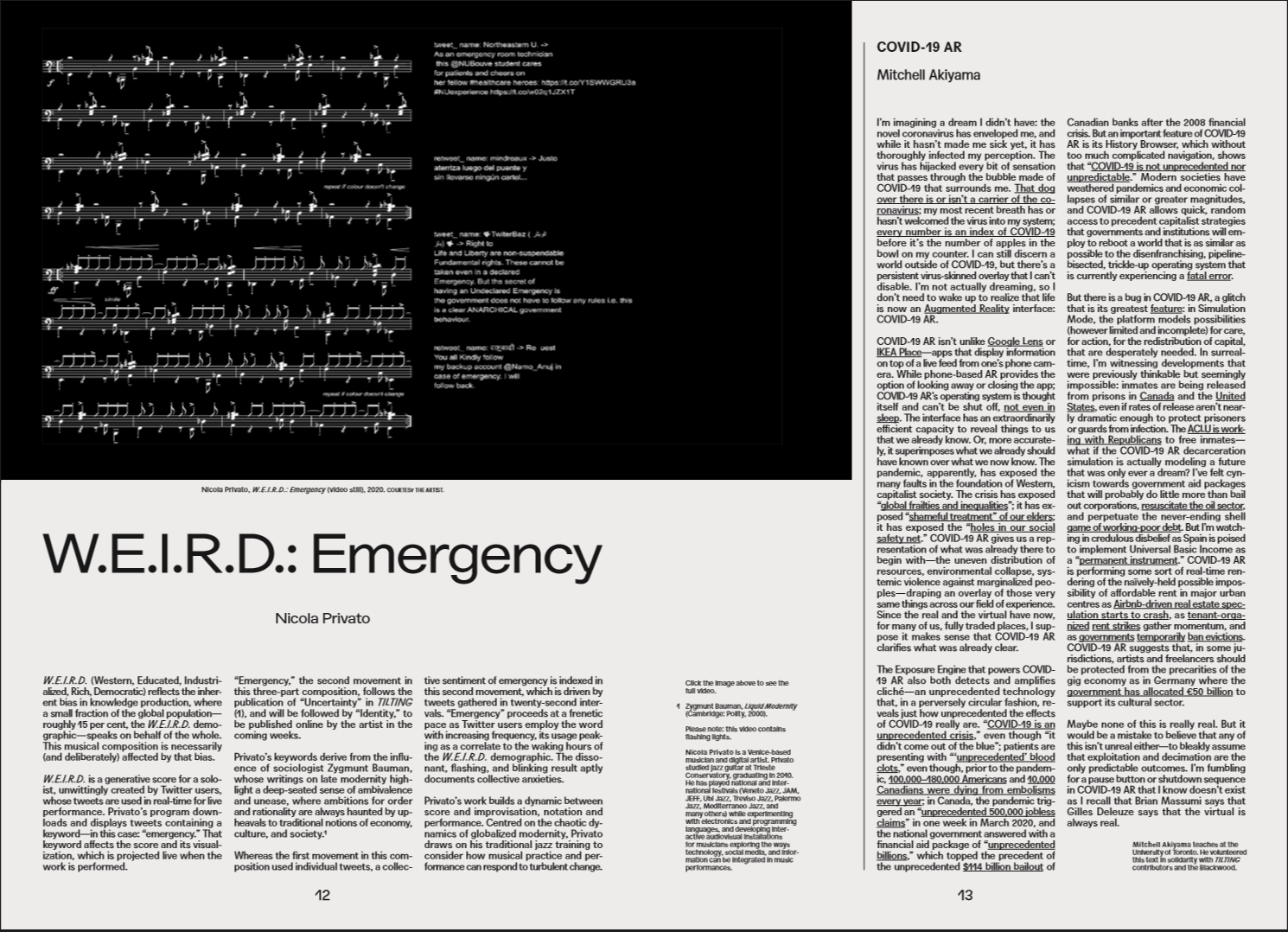
For piano and twitter users,
2019-2021
W.E.I.R.D. is a generative score for piano and tweeter users. A bot downloads and shows all the real-time tweets containing a specific word, which then affects in various ways the score. W.E.I.R.D. is meant for live performances, but these recorded versions have a special value for me, since they were recorded during the Covid pandemic as a way to share the collective experience of music in a period of social isolation.
W.E.I.R.D. stands for Western-Educated-Industrialised-Rich-Democratic, and is the acronym of a representative bias of social sciences.
The composition is loosely serial: the first movement processes in various ways the intervals of c-a-f-b, the second adds d-eb-ab-b, the third complete the dodecaphonic series with db-e-f#-g.
1_Uncertainty
WEIRD 1 Uncertainty
Processing video...
"Uncertainty" is the keyword for the first of the three movements, followed by "Emergency" and "Identity". The choice of the keywords is very much influenced by Zygmunt Bauman's essays, and is an attempt to address some of the main issues of postmodern society.
In "Uncertainty" the tweets trigger at first the creation of the composition, bar by bar. Once most of the bars are out (the last one that never appears), the soloist starts to play, while the tweets move the score back and forth from a finished version to a less rythmically and melodically refined one: The score itself is influenced by uncertainty, which triggers it to action but at the same time prevents it from reaching a defined appearance.
2_Emergency
WEIRD 2 Emergency
Processing video...
"Emergency" is the second of three movements. Here the focus is on the number of tweets containing the keyword. Once started, the program analyses the average number of tweets and self calibrate. After two minutes, the fist scene gets triggered. The program counts the tweets received every 20 second, and compares the resulting number to that of the preceding scene. If the number is higher, the color changes and the player moves to the following section, otherwisethe preceding scene is displayed.
3_Identity
WEIRD 3 Identity
Processing video...
"Identity" is the third and final movement. It is longer and more articulated than the first two, and was developed about eight monts after the first lockdown. In this movement the performer has to use a specifically designed looper, which as the score changes keeps juxtaposes the last four musical phrases. It is conceived as a metaphor of the way we develop our own identities, combining chance, the pressure of society around us and the compounding of our choices. Identity counts the tweets being posted, and after fourteen it moves to the next phrase, which the performer has to record by activating the looper and playing. The overall sound is determined by how the different phrases overlap one over the other, which in turn depends on the timing of the tweets and the recording of the loop.
Civico 19
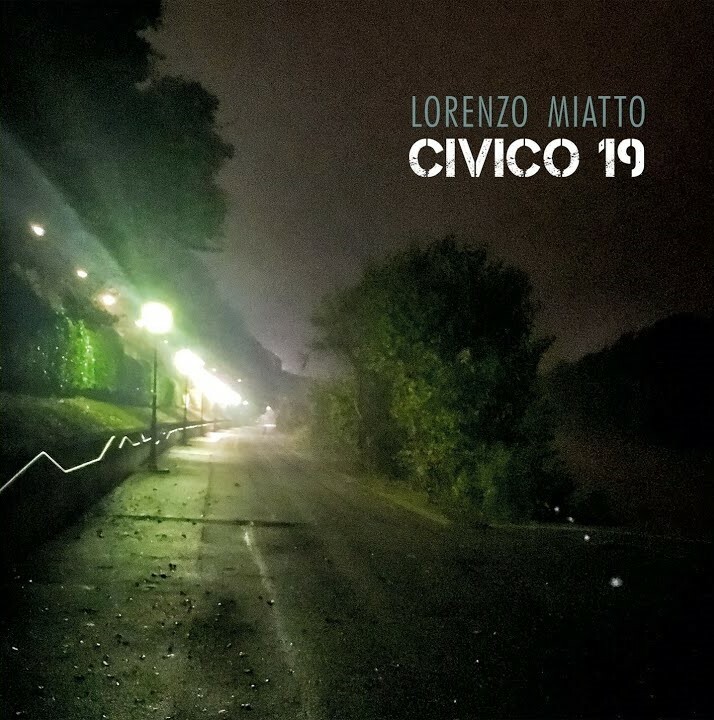
This album was recorded in 2019, right before the pandemic. It's the last jazz album on guitar I recorded, to date at least... It features two compositions by myself, "Shapes" and "Whirlwinds". On bass and leading the trio is Lorenzo Miatto. Niccolò Romanin on drums.